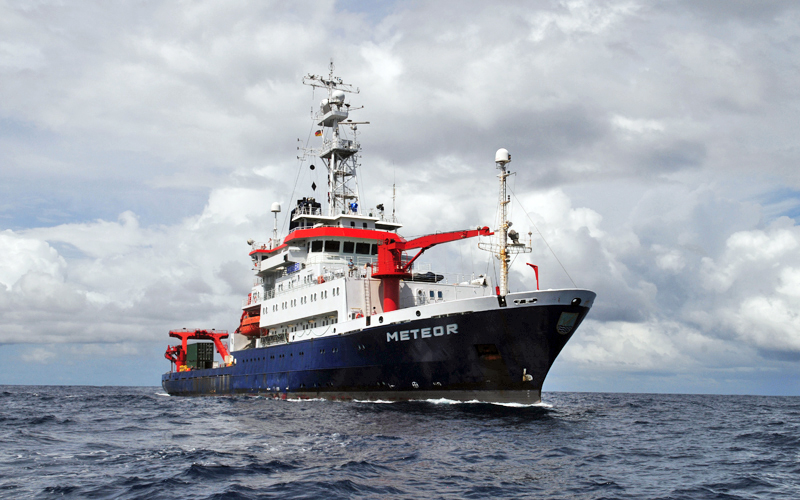METEOR M133
- Area:
- South Atlantic Ocean
- Time:
-
15.12.2016 - 13.01.2017
- Institution:
- GEOMAR
- Chief scientist:
- Martin Visbeck
Ocean observations are the basis of all further understanding, assessing and predicting ocean change. Working on a research vessel with its dependence on the weather and the special conditions on a floating lab platform is therefore a valuable experience for all future marine scientists. The GEOMAR and the Cluster of Excellence "The Future Ocean" together with the research center MARUM, the "Partnership for Observation often the Global Ocean" and the Horizon2020 project AtlantOS provide a unique research training program in the field of ocean observation in the South Atlantic for 11 students from 5 countries. It takes place on the cruise M133 of the German research vessel METEOR from Cape Town (South Africa) to Port Stanley (Falkland Islands).
The young scientists get insights into research in the fields of physical oceanography, marine meteorology, biogeochemistry, plankton ecology and paleoozeanography. They are trained in a number of measuring instruments, participate in a series of lectures and work out their own research topics.
In addition, the crossing of the South Atlantic allows the recording of oceanographic and meteorological data. In particular, physical and chemical parameters are collected and aerosol and cloud measurements are carried out. A limited hydrographic programme focusses on the border streams at the east and west edge of the South Atlantic with some CTD stations. Plankton nets are regularly used by the colleagues from Bremen during the expedition.
The expedition is focussed on the multidisciplinary surveying of the South Atlantic Subtropic currents along the 34.5 ° latitude. This section runs along an international mooring array (SAMOC) and roughly represents the X18 XBT line.
Most measurements can be carried out underway. Surface water is used to determine surface temperature and salinity. In addition, an underway-CTD is used, which can sample the upper 300m while the vessel is moving. Chemical analyzes of surface water and atmospheric measurements are of scientific interest to compare different regions and to document long-term changes. At the west and east borders of the Atlantic measurements are made over the full water column.
Measurements of the planktonic diversity close to the ocean surface enable scientists to better calibrate the shell-samples found in sediment cores. Furthermore, samples of biodiversity are taken for later laboratory analyzes.
Furthermore, multibeam echosounder measurements are continuously taken and 19 profiling Argo floats are launched to maintain the global ocean observation network.



